Abstract
In a retrospective survey, the epidemiological characteristics of nursing sickness in Standard Black and Pastel mink (Mustela vison) were examined in a Danish fur research farm. Based on the clinical diagnosis of the disease, the overall morbidity in a total of 1774 lactating females amounted to 14.4% and the case fatality rate to 7.8%. Apparently healthy females weaned an average of 5.0 kits per litter, while dams suffering from nursing sickness raised and weaned an average of 5.4 kits per litter (p less than 0.01). Based on logistic regression analysis, the increasing age of the lactating dam, followed by littersize and female weight loss, appeared to be major determinants for the development of nursing sickness. The impact of additional covariates such as litter weight gain and female color type were remarkably low. At weaning (day 43) the mean individual live weight of the kits of either sex did not differ between healthy and sick dams. In Standard Black, the total biomass of the offspring raised by sick dams was significantly larger than that of the healthy controls (p less than 0.01). During the final two weeks of lactation, apparently healthy dams lost on average 14% of their body mass, whereas those affected by nursing sickness had a mean weight loss of about 31% (p less than 0.001). Postmortem examination of 25 dams with severe nursing sickness verified the clinical findings of progressive dehydration and emaciation. The gastrointestinal tract was empty and gastric ulcers and melaena were frequently present. Other common findings included small livers,enlarged adrenals and pitted kidneys.(ABSTRACT TRUNCATED AT 250 WORDS)
Full text
PDF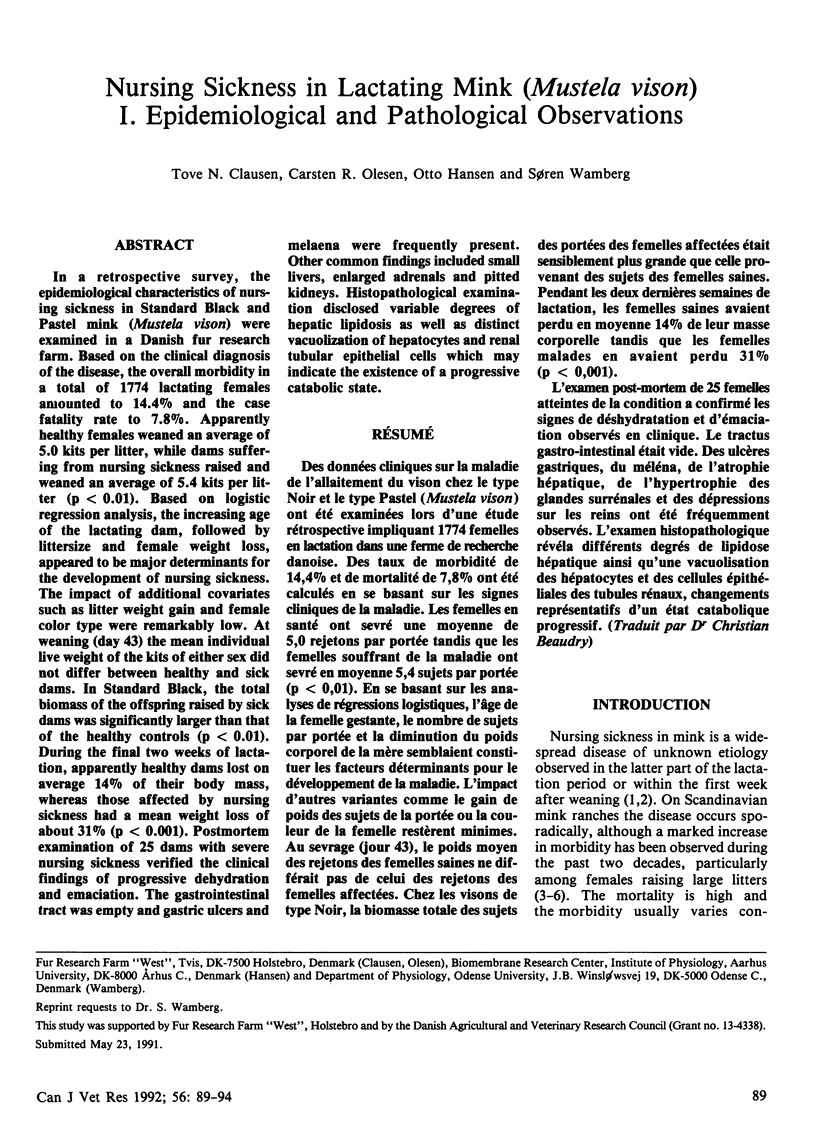
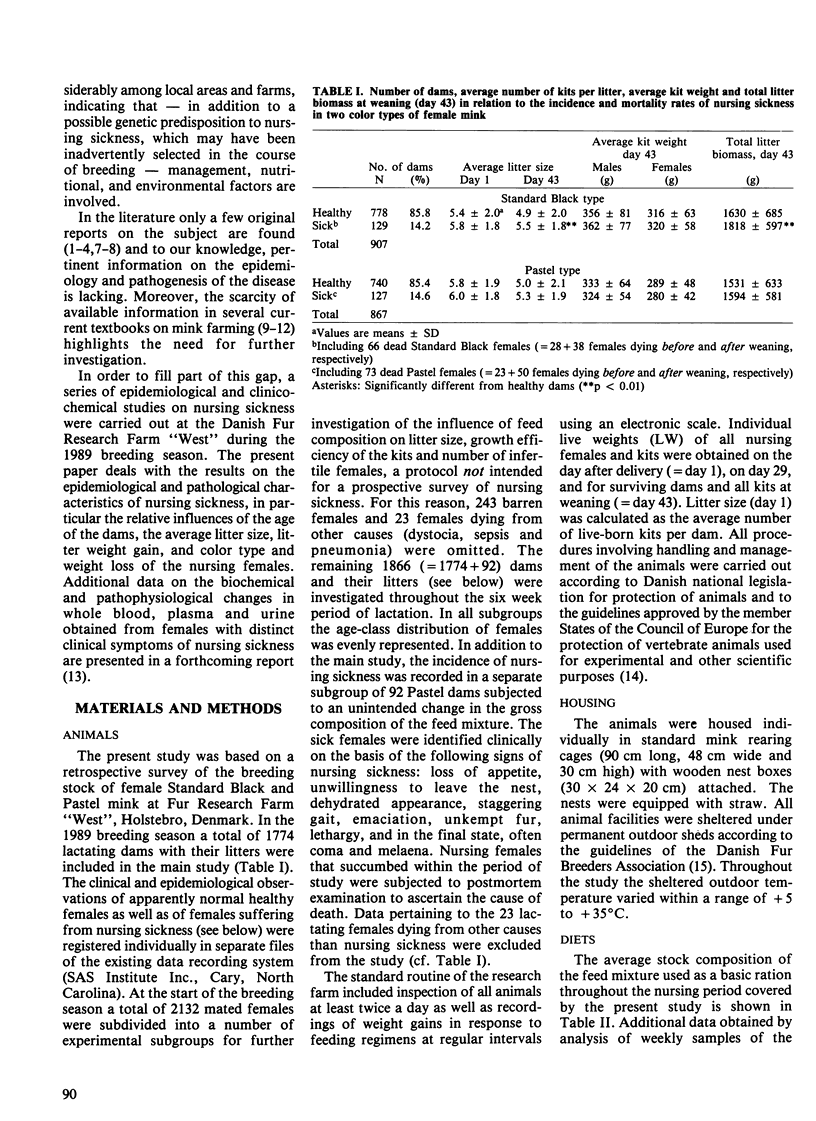

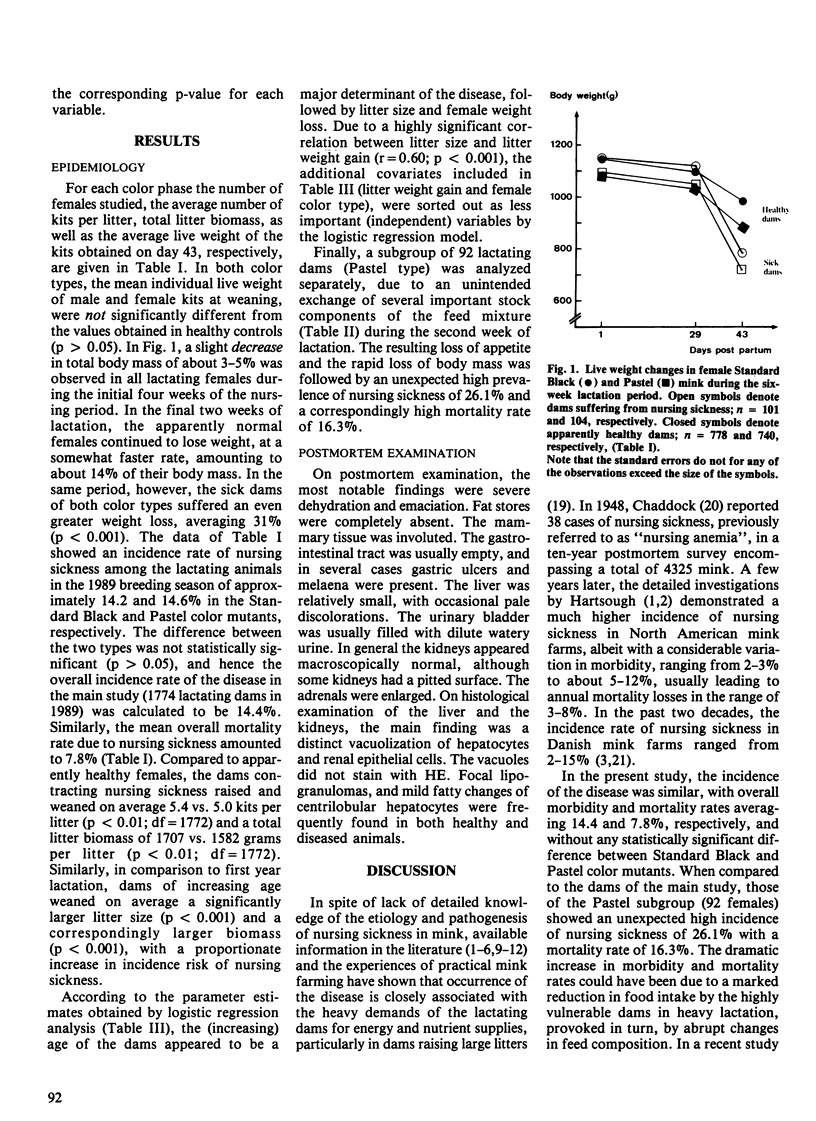
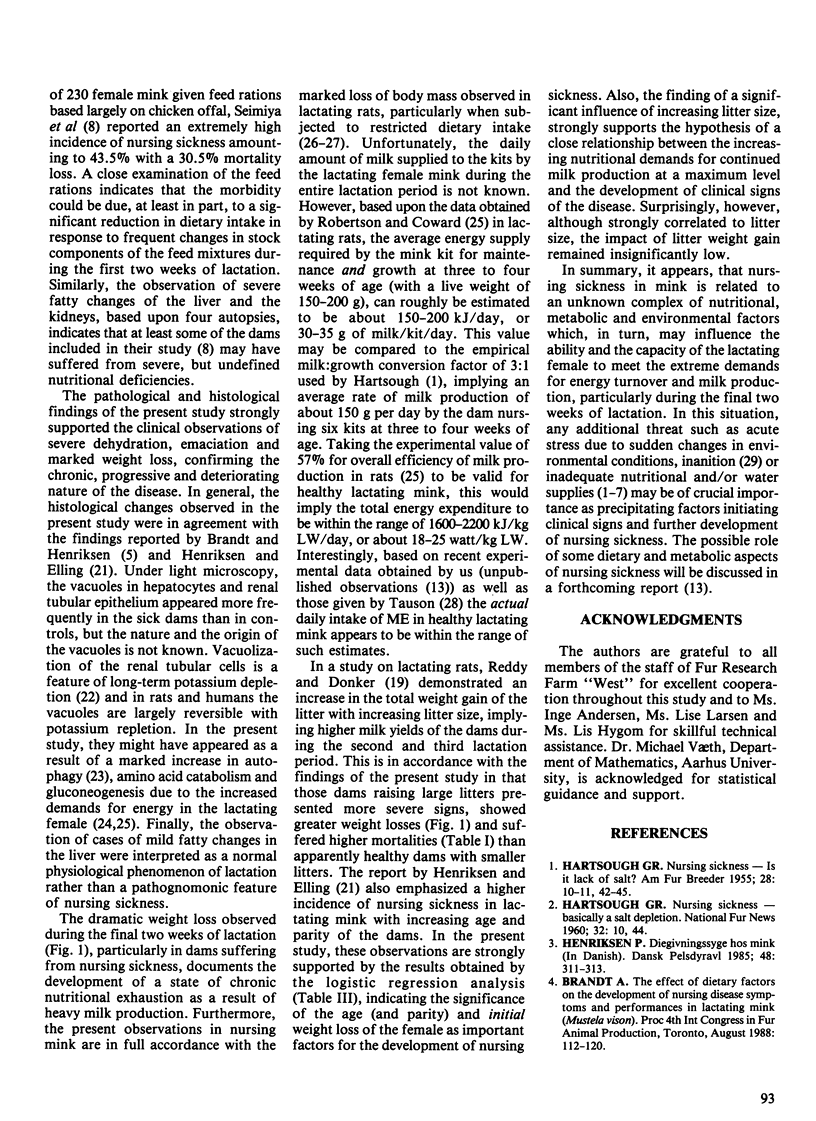
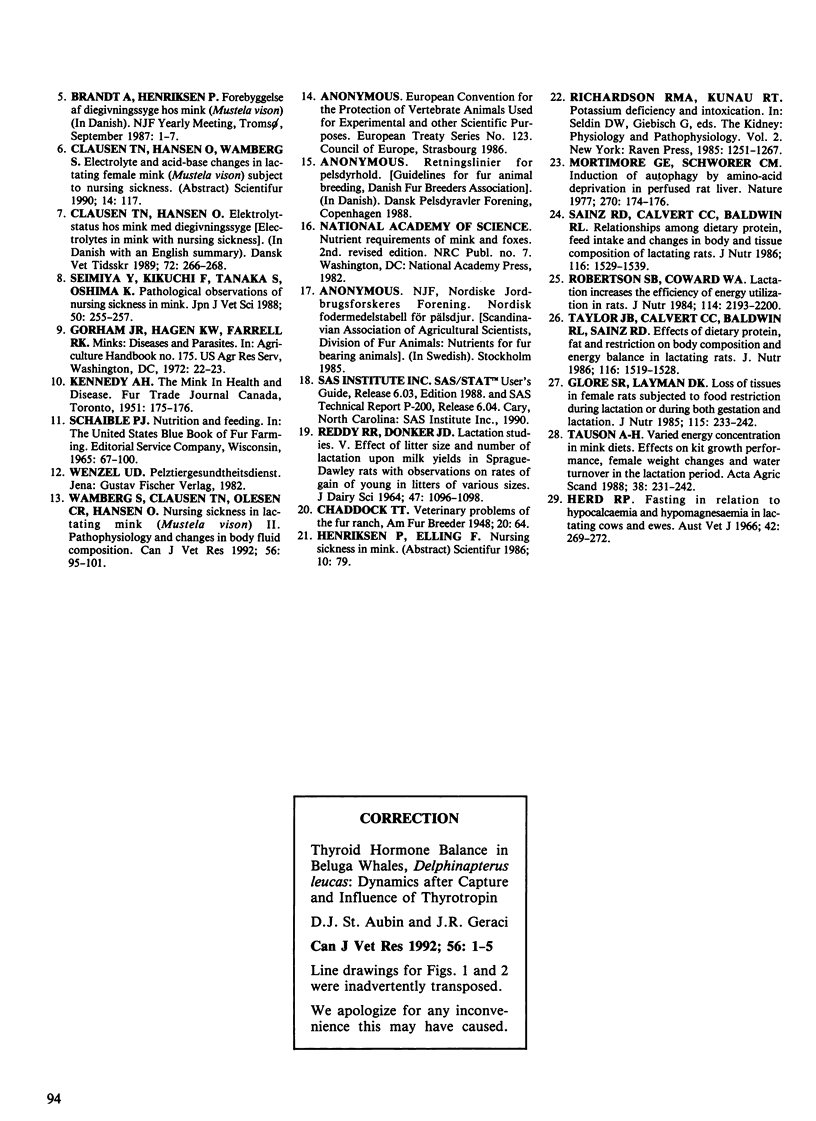
Selected References
These references are in PubMed. This may not be the complete list of references from this article.
- Glore S. R., Layman D. K. Loss of tissues in female rats subjected to food restriction during lactation or during both gestation and lactation. J Nutr. 1985 Feb;115(2):233–242. doi: 10.1093/jn/115.2.233. [DOI] [PubMed] [Google Scholar]
- Herd R. P. Fasting in relation to hypocalcaemia and hypomagnesaemia in lactating cows and ewes. Aust Vet J. 1966 Aug;42(8):269–272. doi: 10.1111/j.1751-0813.1966.tb08833.x. [DOI] [PubMed] [Google Scholar]
- Mortimore G. E., Schworer C. M. Induction of autophagy by amino-acid deprivation in perfused rat liver. Nature. 1977 Nov 10;270(5633):174–176. doi: 10.1038/270174a0. [DOI] [PubMed] [Google Scholar]
- Roberts S. B., Coward W. A. Lactation increases the efficiency of energy utilization in rats. J Nutr. 1984 Dec;114(12):2193–2200. doi: 10.1093/jn/114.12.2193. [DOI] [PubMed] [Google Scholar]
- Sainz R. D., Calvert C. C., Baldwin R. L. Relationships among dietary protein, feed intake and changes in body and tissue composition of lactating rats. J Nutr. 1986 Aug;116(8):1529–1539. doi: 10.1093/jn/116.8.1529. [DOI] [PubMed] [Google Scholar]
- Seimiya Y., Kikuchi F., Tanaka S., Ohshima K. Pathological observations of nursing sickness in mink. Nihon Juigaku Zasshi. 1988 Feb;50(1):255–257. doi: 10.1292/jvms1939.50.255. [DOI] [PubMed] [Google Scholar]
- Taylor J. B., Calvert C. C., Baldwin R. L., Sainz R. D. Effects of dietary protein, fat and restriction on body composition and energy balance in lactating rats. J Nutr. 1986 Aug;116(8):1519–1528. doi: 10.1093/jn/116.8.1519. [DOI] [PubMed] [Google Scholar]
- Wamberg S., Clausen T. N., Olesen C. R., Hansen O. Nursing sickness in lactating mink (Mustela vison). II. Pathophysiology and changes in body fluid composition. Can J Vet Res. 1992 Apr;56(2):95–101. [PMC free article] [PubMed] [Google Scholar]


